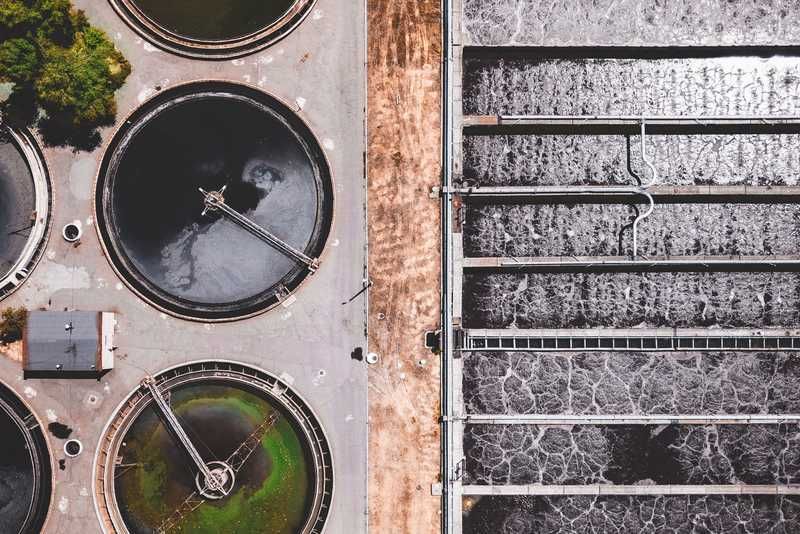Sectors

Phosphorus recovery from sewage sludge
In Germany, approximately 2 million tons of sewage sludge (dry matter content approximately 25%) are generated annually. This partially dewatered sewage sludge requires complex and expensive disposal. According to a publication by the Federal Environment Agency, in 2010, approximately 30% of this amount was spread on agricultural land, approximately 53% was incinerated in various facilities, and approximately 17% was used for landscaping.
The resulting costs for the sewage treatment plants are enormous: the total costs, including the costs for partial dewatering and transport, are between €120 and €375 per tonne of dry matter for agricultural application and between €180 and €400 per tonne of dry matter for thermal sewage sludge mono-incineration.
The high costs, especially for thermal utilization, result primarily from the high water content of sewage sludge, its associated relatively low calorific value, and its very poor dewatering properties. This cost structure is expected to become even more dramatic in the coming years, as the application of sewage sludge to organic farming is now prohibited, and the Sewage Sludge Ordinance, which came into force in autumn 2017, restricts the application of sewage sludge to fields for environmental reasons. The Fertilizer Ordinance also drastically restricts the use of fertilizers by agricultural consumers. All of this is leading to a rapid increase in demand for sewage sludge disposal.
Across the EU, approximately 9 million tons (dwt) of sewage sludge currently have to be disposed of annually. Due to a lack of incineration plants, disposal costs are inevitably rising. It’s already reached the point where municipalities can no longer dispose of their sludge.
Sewage sludge disposal is becoming noticeably more expensive
Saxon newspaper, August 11, 2017
The reason is changes to the Fertilizer and Sewage Sludge Ordinance. According to these, sewage sludge can no longer be applied to fields as easily as in the past. “As a result, stockpiles are growing, and the LAV no longer knows what to do with the new deliveries.”
Prices for sewage sludge disposal continue to rise rapidly
15.06.2018 Hannoversche Allgemeine
Disposing of sewage sludge from the Nordgoltern wastewater treatment plant is becoming increasingly difficult. Only a few companies are even accepting the waste anymore, and the costs are rising rapidly.
The available disposal capacities on the market are “very fast-moving,” said Torsten Holzhausen, Operations Manager of the municipal wastewater department. There are now municipalities “that are no longer receiving any offers at all.”
Shifting waste disposal to incineration instead of fertilization will result in additional, huge amounts of climate-damaging CO2, as balancing the emissions is not expected in the short term. Partial carbonization of the sewage sludge could therefore provide a solution, as coal is considered a natural CO2 sink.
About half of Germany’s demand for mineral fertilizer phosphorus could be covered by the phosphorus contained in sewage sludge and wastewater, thus reducing dependence on foreign phosphorus producers.

The solution
- DECENTRALIZED TECHNOLOGY: Sewage sludge is recycled where it is generated. This means that the process we use is designed as a decentralized, on-site technology. The systems are also cost-effective for small wastewater treatment plants. Thanks to the containerized design, each system can be expanded modularly as needed.
- INDEPENDENCE: The wastewater treatment plant will no longer be affected by capacity bottlenecks and rising transport and disposal costs. It can now calculate its sewage sludge utilization more effectively and plan and manage it for the long term.
- COMPLETE RECYCLING: We solve this glaring problem with compact plants that fully recycle sewage sludge, both in terms of materials and energy, into a Europe-wide approved phosphorus fertilizer substrate. Further, costly processing or landfilling of “residual materials” is eliminated.
The advantages
By carbonizing sewage sludge, we actively protect our environment and the climate
- The amount of sewage sludge is significantly reduced
- Phosphorus is recovered as a secondary raw material in a plant-available form. Because the thermal treatment in this process takes place at significantly lower temperatures than in conventional incineration, the phosphorus remains plant-available, unlike the ash from mono-incineration plants. No subsequent and costly digestion is necessary.
- During carbonation, carbon is bound long-term and stored in the soil for centuries
- CO2 emissions are drastically reduced compared to mono-combustion.
- The sewage sludge is sanitized. Hormones, germs, drug residues, microplastics, and similar contaminants are eliminated.
- The recycling process is autothermal. Except for the start-up energy, the plant uses only energy from the sewage sludge.
-
The new sewage sludge regulation lists the carbonization process we use as a possible recycling technology for sewage sludge:
- Official designation of the carbonization process as a suitable phosphorus recycling process
- Explicit definition of carbonisates as a product of sewage sludge recycling
- Equivalent classification of the carbonization process with the sewage sludge incineration process
- Carbonisates are open to all treatment and recycling options: For phosphorus recovery, recycling or processing
- Carbonation, along with combustion processes, is exempt from the semi-annual analytical requirement
- In addition, the Federal Council has called on the government to accelerate the approval of secondary phosphates as fertilizers.